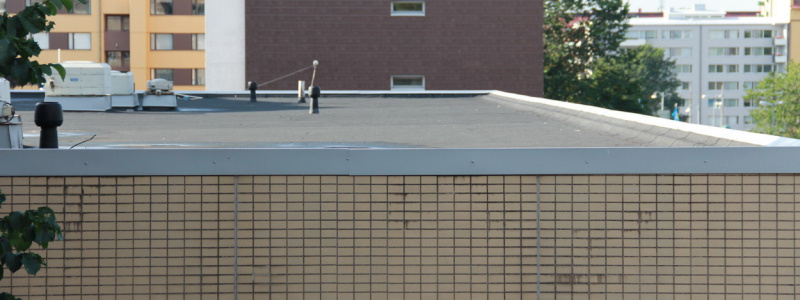The Upper Tribunal has reached a number of interesting findings around a Landlord’s ability to build additional flats on the roof in the case of Vectis Property Company Ltd v Cambrai Court Management Company Ltd [2022] UTUK 42 (LC).
Background
The case involved an appeal from the decision of the First-tier Tribunal (FTT) concerning the premium payable for the freehold by the flat owners acquiring it forcibly pursuant to an enfranchisement claim via their nominee purchaser Cambrai Court Management Company Limited (Cambrai) which was also the management company appointed under the flat leases.
Cambrai contended that there were a number of legal issues that prevented the outgoing freeholder from being able to construct additional flats on the roof and so there was no development value that fell to be compensated.
The block in question contained nine flats with a garden and parking spaces. There was a flat roof which remained in the landlord’s possession (as the flat owners each owned only the internal eggshell of their respective flat). Cambrai had responsibility under the leases to maintain the building including the roof.
Planning permission had been obtained to construct two new flats on the roof by a developer who offered to acquire the freehold. The landlord wished to proceed and so first offered the freehold to the tenants as required by the Landlord and Tenant Act 1987. The flat owners decided to ignore that offer and instead acquire the freehold under the Leasehold Reform Housing and Urban Development Act 1993 by way of collective enfranchisement. No doubt this was driven by the hope that the premium they would have to pay would not include as much development value.
The element of premium payable for development value could not be agreed; the landlord contended for £203,300 and the tenants £0. The FTT determined that the lease term prevented the landlord from being able to undertake the development but that despite this a buyer of the freehold might pay a further £25,000 in the hope of being able to release the development value i.e. that this could be achieved through negotiations with the tenants that held the key. The FTT also found that even if it was wrong about the landlord’s right to develop then the development value would amount to £166,725. The landlord appealed with permission from the Upper Tribunal seeking £191,225.
Decision
The Upper Tribunal found in favour of the landlord.
An express right to build not required in the leases - The landlord was entitled to build on the roof even though there wasn’t an express right reserved to it to do so – no such rights were required as the landlord hadn’t let any part of the roof or airspace above to any of the flat owners and so he could do what he wished with the land as long as he didn’t interfere with the rights granted to flat owners via their leases. A development right was reserved that referenced other parts of the estate i.e. the grounds. The tenants contended that as the roof was not covered by this right the landlord was prevented from so developing; the Upper Tribunal rejected this on the basis no such right was required.
The ability of Cambrai to undertake its management function would not be impeded by the development - Creating the new flats would not prevent Cambrai from being able to access and repair the roof. The terms of its repairing obligation meant nothing more than it was obliged to prepare whatever roof might be in place from time to time i.e. the new roof above the flats to be created and so this didn’t prevent the landlord from developing the property.
The terms of the flat leases did not mean that no further flats could be created and Cambrai had to join in the new leases - The implications of the letting scheme contained in the flat leases did not stand in the way of the development – there were two issues examined by the Upper Tribunal here; firstly whether the letting scheme restricted the number of flats to nine and secondly whether the lease appointed management company Cambrai would be obliged to join in the leases of the new flats so as to make the letting scheme work in respect of the enlarged building. The Upper Tribunal found that the scheme extended to positive and negative covenants so enabling service charge obligations to be enforced by Cambrai as against tenants of the new flats for example (so there wasn’t a problem there) and that it was obliged to join in future leases of those flats.
So the landlord’s appeal succeeded and the premium would need to reflect the development value. As the Upper Tribunal put it “of course (Cambrai) does not face the prospect of having to put up with that development because it is going to buy the freehold and will be able to refuse whatever temptations and developer purchaser can offer. The landlord is entitled to be paid a price that reflects the development value it is losing when it parts with the freehold”.
Conclusion
This case will give comfort to landlords that they can develop the roof space despite the issues that the tenants in this case asserted stood in the way of its ability to do so.
Had the Upper Tribunal decided otherwise then the flat owners via Cambrai would have effectively acquired the freehold with paying very little for the development value that they could then either realise themselves or sell on by granting a development lease to enable a developer to implement the development and share the profit with them instead.
The tenants may have wished that they claimed the freehold before planning permission was obtained and a developer deal agreed so as to potentially achieve a lower development value figure for planning and construction risk.
